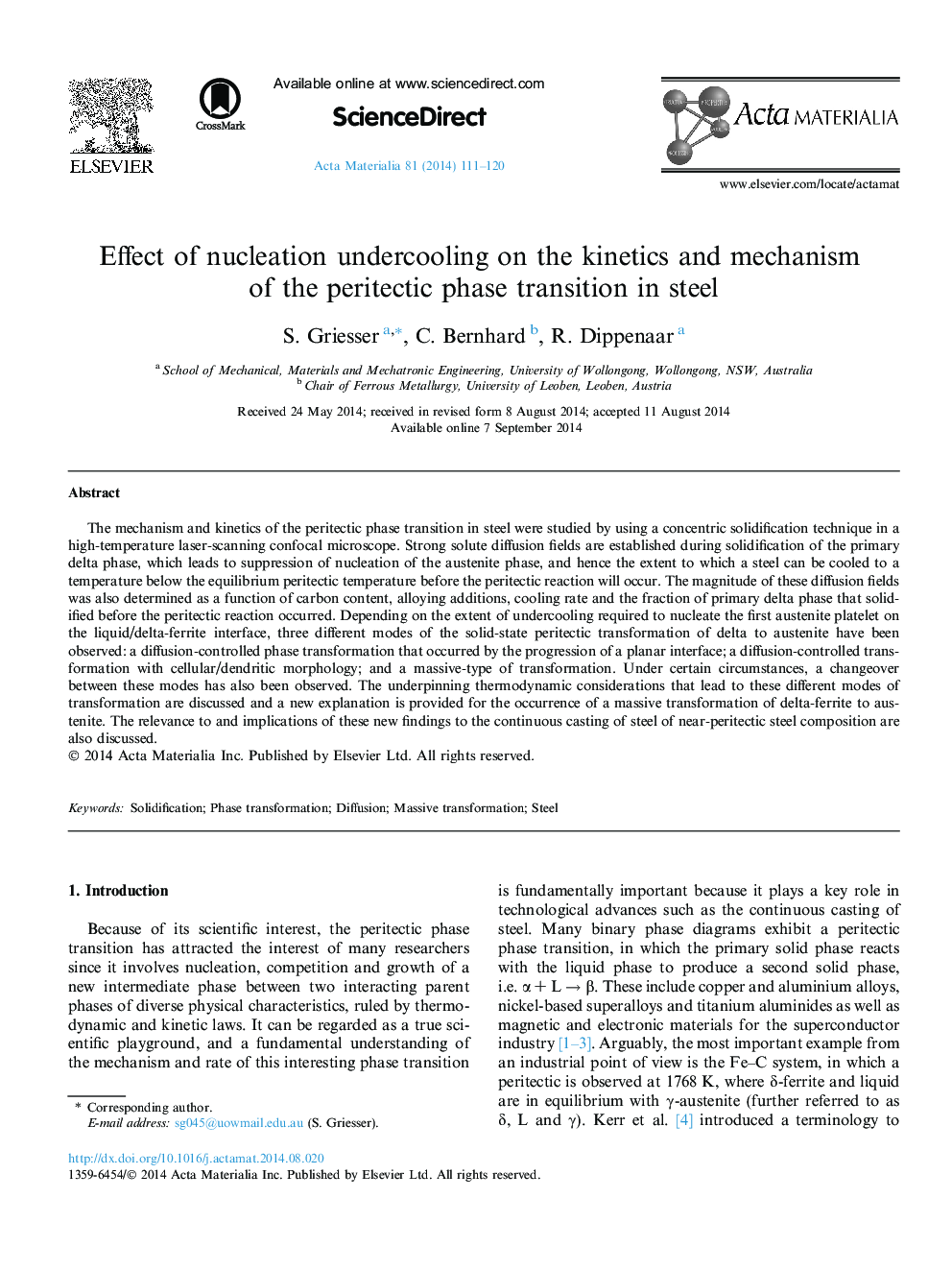| Article ID | Journal | Published Year | Pages | File Type |
|---|---|---|---|---|
| 1445602 | Acta Materialia | 2014 | 10 Pages |
The mechanism and kinetics of the peritectic phase transition in steel were studied by using a concentric solidification technique in a high-temperature laser-scanning confocal microscope. Strong solute diffusion fields are established during solidification of the primary delta phase, which leads to suppression of nucleation of the austenite phase, and hence the extent to which a steel can be cooled to a temperature below the equilibrium peritectic temperature before the peritectic reaction will occur. The magnitude of these diffusion fields was also determined as a function of carbon content, alloying additions, cooling rate and the fraction of primary delta phase that solidified before the peritectic reaction occurred. Depending on the extent of undercooling required to nucleate the first austenite platelet on the liquid/delta-ferrite interface, three different modes of the solid-state peritectic transformation of delta to austenite have been observed: a diffusion-controlled phase transformation that occurred by the progression of a planar interface; a diffusion-controlled transformation with cellular/dendritic morphology; and a massive-type of transformation. Under certain circumstances, a changeover between these modes has also been observed. The underpinning thermodynamic considerations that lead to these different modes of transformation are discussed and a new explanation is provided for the occurrence of a massive transformation of delta-ferrite to austenite. The relevance to and implications of these new findings to the continuous casting of steel of near-peritectic steel composition are also discussed.
